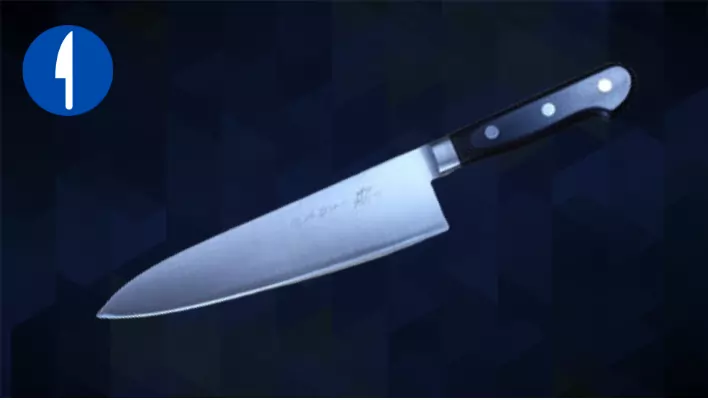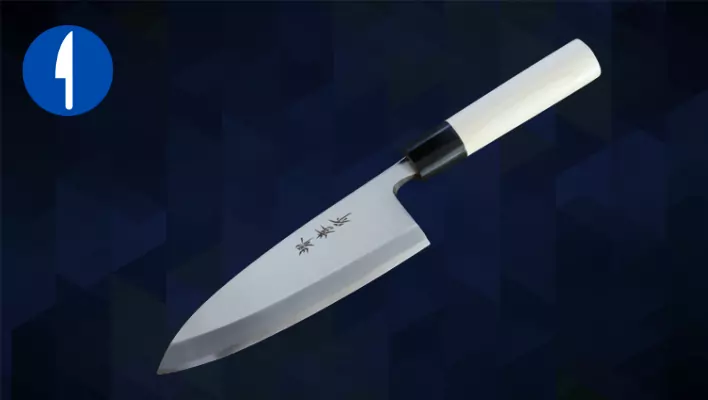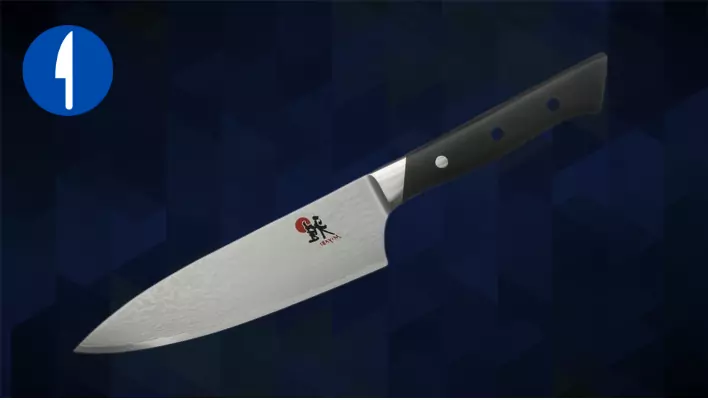A knife is the core part of a kitchen in the life of any chef whether you are working in a commercial restaurant or kitchen or even at home. Without a knife, a chef may not be able to survive in his career. So, the best knife is always a requirement for a chef. But, what is the best knife? There are already tons of knives in the market and how we would be able to distinguish what to pick and what to avoid.
Here is the tip, if you know the types of knife steel, you would never be fooled. A blade is the core part of any knife and it should deliver the best performance. So, if that knife is made up of a nice steel type, it would surely perform outstanding otherwise, it won’t! Here, you just need to know the best type of knife steel and we are here to provide you with the knife steel comparison. So, let’s get into it.
06 Best Types Of Knife Steel | Knife Steel Comparison
- Blue 2 Steel

Theoretically, knife steel can be divided into many types and there are a lot of different steel in the market. However, knife steel is mainly divided into two types that are known as blue steel and white steel. Now, these two types of steel aren’t literally blue or white in color but it is just a difference in their properties.
Take a look at blue steel which is common steel in the production of knives. Blue steel is a modified and advanced version of high carbon steel and it has a slightly better carbon ratio than other steel. The range of carbon here lies between 0.55% to up to 1.75% on the safer side although you can add much more.
The higher side of this range is used in premium knives to ensure extended durability along with better sharpness. Because carbon helps optimize the sharpness. The knives being made up of blue steel features better edge retention. You will get blue steel in the top Japanese knives with a very good performance.
In blue 2 steel, tungsten, and chromium content are added to bring toughness to its blade structure. Moreover, the tempering process makes it even more amazing. However, you may need a bit of extra care to prevent your knife from rusting. But if your knife has chromium content, you don’t need to worry about it.
- White 2 Steel

White steel is another type of steel and it has also got a couple of variants further. Its major alloy is white 2 steel which is another great option for kitchen knives after the blue steel. In this steel, manufacturers use fine quality steel as they need precision while making these blades. Otherwise, the blade will never be straight.
White 2 steel knives are better when it comes to ease of sharpness and you will experience almost the same sharpness as blue steel knives. The edge retention is also quite good but it is somewhat extraordinary in blue 2 steel knives so blue steel has an edge over this. The knives made through are the best ones in vegetable, sushi sort of knives where you need clean cuts.
- SG2 Steel

SG stands for Super Gold in SG2 steel which is also high carbon steel along with an integration of the anti-rust properties. This steel is prepared through metallurgical operations along with a detailed heat treatment to ensure durability out of the box. Not only is it durable, but it is rust-resistant as well at the same time.
Because it has several laminated layers which protect the knife from stains, scratches, and corrosion. The knives made through SG2 steel follow the forging process and this is now being used to make quality chef knives due to their carbon. In this steel, the carbon content is mostly above 1% or even 1.5% also.
The carbon adds toughness and strength properties like wear and tear sort of things. Then, the major element here is chromium which is used to enhance its resistance against rust and stains. SG2 knives usually have a higher HRC of up to 65. Even though it’s a hard knife, resharpening is still not a big deal for this steel.
SG2 VS VG Max Steel
These two steel are different from each other due to their method of processing. So, there would be some difference in their performance as well. If you want to get reasonable edge retention at a good price, then you should pick SG2 instead of VG10 or VG Max. Sharpening is also not an issue but it would be easier in VG Max.
In terms of sharpness, VG Max is better than SG2 but SG2’s performance is also not so far. Other than that, there is not a big difference in their versatility, corrosion resistance, toughness, and overall usability but their pricing has.
Don’t confuse between AUS and VG Max steel. Here’s the difference between AUS10 vs VG10 steel.
- What is FC61 Steel

There are many knife brands and some of them exclusively use custom steel such as Shun uses VG10 and VG-Max, Global uses Cromova-18 and Miyabi uses FC61. The FC61 is also a fine grade high carbon steel which is used to make forged knives. This steel performs outstandingly when forged and properly heat treated.
The FC61 steel has a carbon ratio between 0.5-0.8% and it is enough to provide decent durability along with resistance against corrosion. It also has chromium along with a couple of other non-ferrous metals to increase its usability and machinability. You can get a Rockwell hardness of up to 62HRC for better edge retention. Also, it features a good wear resistance and ease of sharpness.
FC61 Steel VS SG2
Both FC61 and SG2 steels are used by Miyabi to compose outstanding knives keeping the budget and performance in mind. FC61 is used in mid-range knives however SG2 is featured in high-end knives. The price point is obviously different for both but you will get almost similar edge retention and rust resistance in them.
VG10 VS FC61
VG10 steel is one of the best types of knife steel ever produced. This steel is mostly used in Japanese knives and it features an outstanding sharpness. It is easy to sharpen steel and you can get a Rockwell hardness of even 65 HRC as well. So, durability, usability, and toughness are never an issue for VG10 as it is premium steel. FC61 is not premium steel but features a reasonable sharpness and versatility. The Rockwell hardness for FC61 is up to 62HRC and it is anti-rust as well.
- Cromova 18 Steel

Another greatest knife steel type is exclusively used by Global knives across all their knives. It dates back to a couple of decades ago since the launch of Global knives because they have to do something unique from the others.
Compared to the other ones, it is hard steel and you can expect a Rockwell hardness of even above 65 HRC. You will get a diverse list of ingredients mainly including tungsten, chromium, molybdenum, and cobalt as well. The carbon content above 1% also makes it harder and pretty outstanding. Overall, Cromova 18 knives feature great versatility along with a very lucrative sharpness out there.
Knife Steel Comparison
| Steel | Edge Retention | Corrosion Resistance | Toughness | Ease of Sharpening | Best at |
| ZDP 189 | Good | Yes | HRC 67 | Hard | Excellent strength, viscosity, cutting force, durability, corrosion resistance. |
| R2 Powder steel | Better | Yes | HRC 65 | Normal | Manufactured in powder form with the highest grade stainless steel material, the texture is uniform and the balance between cutting force and blade holding power is excellent. |
| VG 10 | Best | Yes | HRC 65 | Excellent | The most popular high-grade stainless steel at the moment, a material that has high strength and high viscosity, and its performance is further improved according to the manufacturing method |
| Silver-3 steel | Good | Yes | HRC 60 | Good | Mainly for Japanese knives. Steel is strong against rust and has good cutting power. |
| VG1 | Better | Yes | HRC 65 | Easy | Performance is improved according to the high-grade stainless steel material manufacturing method with a dense structure and high toughness and corrosion resistance. |